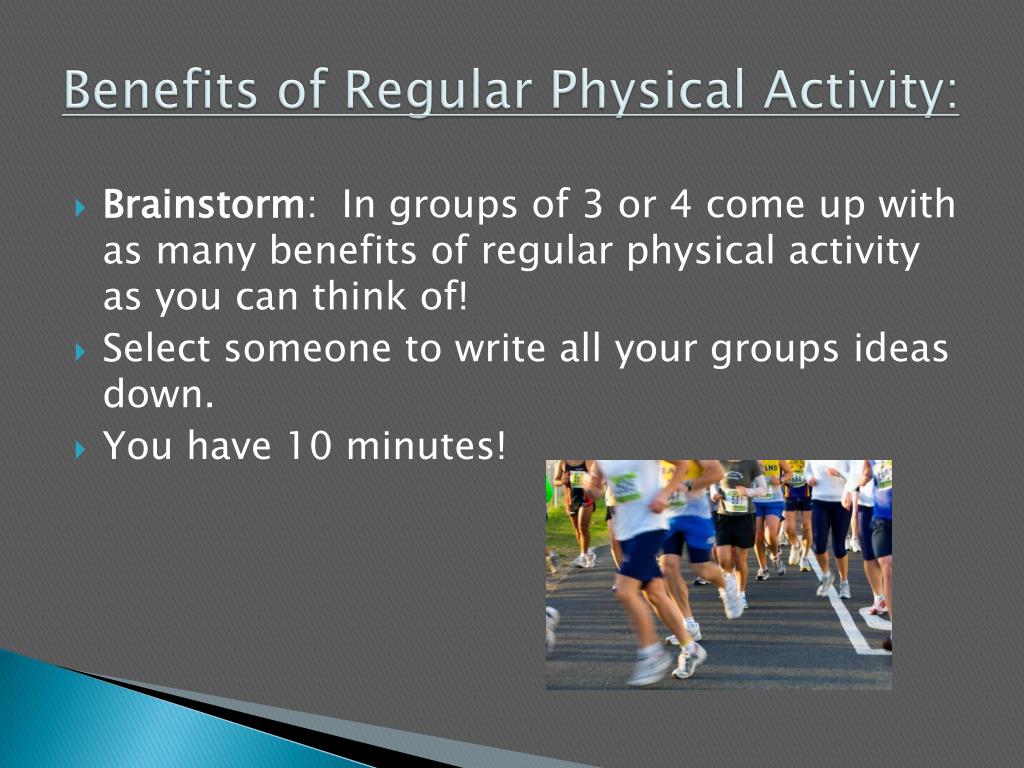

Physical activity improves next-day job performance and health.Įxisting research on the impact of physical activity in the work context has focused on physical activity during specific periods (e.g., exercising over the lunch break), neglecting consideration of physical activity throughout the whole day. The third resource gain is task focus, a cognitive resource that supports enhanced information processing, attention, and concentration. The second resource gain is vigor, an affective resource associated with energy and vitality. Physical activity promotes protein synthesis and facilitates quality sleep as a homeostatic feedback process benefitting the body and brain. The first resource immediately afforded by physical activity is quality sleep, or a person’s degree of satisfaction with their daily sleep experience. We found that daily physical activity generated a package of next-day resources, called “resource caravans,” that contributed to work-related outcomes. Physical activity accrues next-day, work-relevant resources. Importantly, the more autonomous the form of motivation - in other words, the more people consider physical activity to be a fun and enjoyable activity rather than something to dread - the more likely they are to engage in daily physical activity. People’s autonomous motivation, a stable individual difference reflecting the degree to which one feels self-determined to engage in a behavior, is a critical personal resource that can prompt individuals to engage in physical activity. It may seem obvious that being motivated to partake in an activity would lead to doing said activity, but anyone who has ever made and then abandoned a New Year’s resolution knows this isn’t necessarily the case. We uncovered some noteworthy findings about daily physical activity that impact employees and organizations: Motivation for physical activity predicts physical activity. Given that most of our waking hours are spent working, in an effort to support the WHO’s initiative to increase physical activity, our recent research points to some important work-related implications of physical activity.Īpproximately 200 employees from the UK and China participated in a 10-day study in which we captured self-reported and objective physical activity data (via a wearable smart band device), as well as self- and supervisor-reported work outcomes. How physical activity affects work performance Yet we’re finding ourselves sitting more and moving less, as many of us no longer have to commute to work or walk from meeting to meeting. This is all the more important as various emerging work modes have allowed for greater flexibility and convenience. By promoting physical activity and encouraging individuals to engage in regular exercise, the WHO seeks to maximize the benefits of physical activity: preventing and managing noncommunicable diseases like cardiovascular diseases (including coronary heart disease and stroke), various types of cancer, improving overall physical and mental well-being, sharpening cognitive capacity, and ensuring healthy growth and development.Īlthough the benefits of physical activity on general well-being are widely acknowledged, there has been a lack of research on how it impacts outcomes at work, including job performance and health. To combat the negative impact of physical inactivity, in 2018, the World Health Organization (WHO) launched a global action plan aimed at reducing physical inactivity by 15% by 2030. In fact, there has been no improvement in physical activity levels since 2001, and physical inactivity is twice as bad in high-income countries than in low-income countries. Worldwide, 1.4 billion adults are insufficiently active, with one in three women and one in four men not engaging in adequate physical activity.


 0 kommentar(er)
0 kommentar(er)
